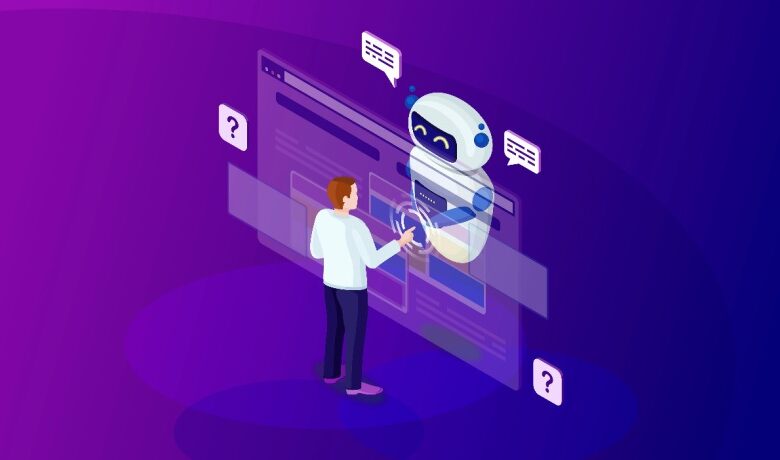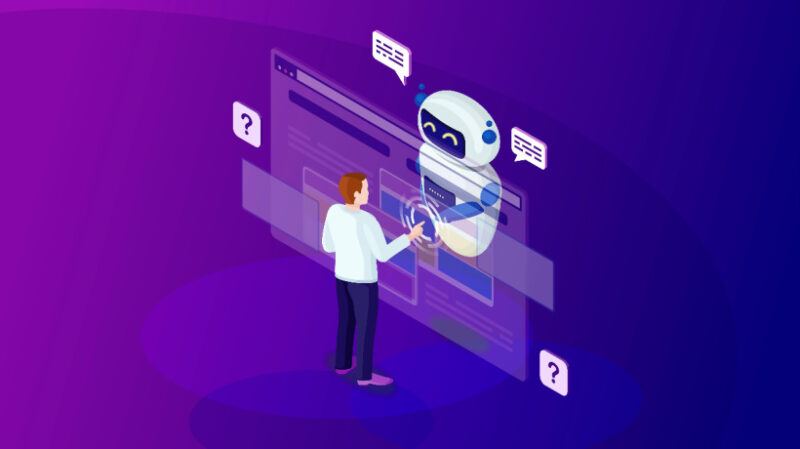ChatGPT In Language Learning: Transforming Linguistic Education


ChatGPT’s Breakthrough In Linguistic Education
With globalization shrinking the world and the increasing importance of multilingual communication, the demand for effective language learning solutions has never been higher. This is where ChatGPT, an advanced AI language model, enters the picture, offering innovative solutions to traditional language learning challenges. This article examines the role of ChatGPT in creating more dynamic and effective language learning programs and why this is a game-changer for eLearning designers.
For eLearning designers, the integration of ChatGPT into language courses is crucial. It’s not just about keeping up with technological trends but about harnessing AI’s potential to make language learning more accessible, personalized, and efficient. ChatGPT, with its sophisticated Natural Language Processing capabilities, opens new avenues in language education, making it possible to offer immersive and interactive learning experiences that were once thought impossible.
The Traditional Challenges In Language Learning
Language learning has traditionally faced several challenges, from the lack of engaging content to the absence of real-world interaction. Traditional eLearning methods often struggle to replicate the nuances and dynamics of natural language use, a gap that is keenly felt by learners seeking practical language skills.
How ChatGPT Transforms Language Learning
- Interactive conversation practice
ChatGPT enables learners to engage in realistic conversations, providing an interactive platform that mimics real-life interactions. This practice is invaluable in developing speaking and comprehension skills. - Personalized learning experiences
ChatGPT can tailor the learning experience to the individual’s proficiency level, learning style, and goals. This personalization addresses one of the biggest challenges in language learning: the one-size-fits-all approach. - Immediate feedback and correction
With ChatGPT, learners receive immediate feedback on their language use, allowing for quick correction and learning. This immediate feedback is crucial for effective language acquisition. - Cultural contextualization
Language is not just about words and grammar; it’s also about culture. ChatGPT can provide cultural context to language lessons, enriching the learning experience.
Integrating ChatGPT In Language Courses
- Designing interactive modules
eLearning designers can leverage ChatGPT to create interactive modules that encourage learners to practice speaking, listening, and writing in a controlled environment. - Supplementing traditional resources
ChatGPT can act as a supplement to traditional learning materials, providing additional practice opportunities and resources tailored to the learner’s needs. - Continuous learning outside the classroom
ChatGPT enables continuous learning outside the traditional classroom setting, allowing learners to practice anytime and anywhere.
Best Practices For Using ChatGPT In Language Learning
- Balancing AI with human instruction
While ChatGPT is a powerful tool, it is most effective when used in conjunction with human instruction. The combination ensures a well-rounded learning experience. - Ensuring cultural relevance and sensitivity
When designing language courses with ChatGPT, it’s crucial to ensure that cultural content is relevant and sensitively presented. - Focusing on practical language use
The goal of language learning is often practical communication. eLearning designers should focus on real-world language use when integrating ChatGPT into courses.
Challenges And Considerations
Implementing ChatGPT in language learning is not without challenges:
- Maintaining engagement
Keeping learners engaged with AI-driven content over time can be challenging. It’s important to regularly update and refresh content to maintain interest. - Technical integration
Smoothly integrating ChatGPT into existing eLearning platforms can be technically challenging and requires careful planning. - Data privacy and ethical concerns
Ensuring the privacy and security of learner data, especially when dealing with AI technologies, is paramount.
Specific Benefits Of ChatGPT In Language Learning
- Diverse language exposure
ChatGPT can simulate conversations in various dialects and accents, giving learners exposure to a wide range of language uses, crucial for developing a well-rounded understanding. - Scalable one-on-one interaction
One significant advantage of ChatGPT is its ability to provide individualized attention at scale, something incredibly resource-intensive in traditional settings. - Contextual learning
ChatGPT can create scenarios or contexts for language use, helping learners understand not just the “how” but also the “when” and “why” of language use. - Reduction in learning anxiety
The non-judgmental, patient nature of AI interaction can help reduce the anxiety often associated with language learning, especially in speaking and listening exercises.
Case Studies: ChatGPT In Action
- Conversational language learning app
A language learning app integrated ChatGPT to provide conversational practice to its users. The AI’s ability to simulate natural conversations led to a significant improvement in learners’ conversational skills. - University language course
A university implemented ChatGPT in its language courses, allowing students to have additional practice and feedback outside of class hours. This led to improved language proficiency scores among students. - Corporate language training program
A multinational corporation used ChatGPT for its employees’ language training, particularly focusing on business communication. The tailored scenarios provided by ChatGPT resulted in more effective communication skills in a business context.
Future Possibilities With ChatGPT In Language Learning
- Advancements in AI conversational abilities
As AI technology evolves, the conversational abilities of ChatGPT are expected to become even more nuanced and human-like. - Integration with Virtual Reality
Combining ChatGPT with VR could create immersive language learning experiences, placing learners in virtual environments that mimic real-life scenarios. - Predictive learning pathways
Future developments could see ChatGPT not only reacting to learner inputs but also predicting and guiding learners through personalized learning pathways based on their progress.
Strategic Advice For eLearning Designers
- Focus on learner needs and goals
Design language courses with the learner’s end goals in mind. Whether it’s conversational fluency, business communication, or academic language proficiency, the course should be tailored to meet these objectives. - Emphasize interactive elements
The power of ChatGPT lies in its interactivity. Ensure that courses are designed to maximize learner interaction with the AI. - Incorporate cultural and contextual elements
Language is deeply intertwined with culture. Including cultural and contextual elements in language courses will provide a more holistic learning experience. - Continuous evaluation and iteration
Regularly evaluate the effectiveness of the AI integration and be prepared to iterate and improve based on feedback and technological advancements.
Conclusion: Embracing AI For Language Mastery
In conclusion, the integration of ChatGPT into language learning is not just an enhancement; it’s a revolution. For eLearning designers, this presents an unprecedented opportunity to reshape language education, making it more effective, engaging, and aligned with the needs of modern learners. The potential of ChatGPT in language courses is vast, from providing personalized learning experiences to creating immersive, context-rich environments.
As AI technology continues to advance, its role in language education will only grow, promising a future where language barriers are significantly reduced, and effective communication across cultures and languages is within everyone’s reach. For those at the forefront of eLearning design, the message is clear: embrace AI, and in doing so, unlock new potentials in language learning and teaching.
Source link



